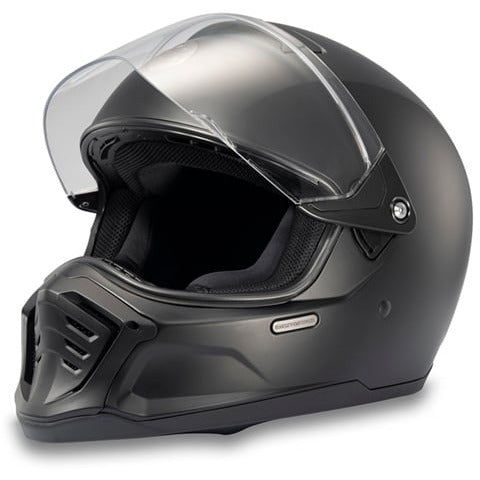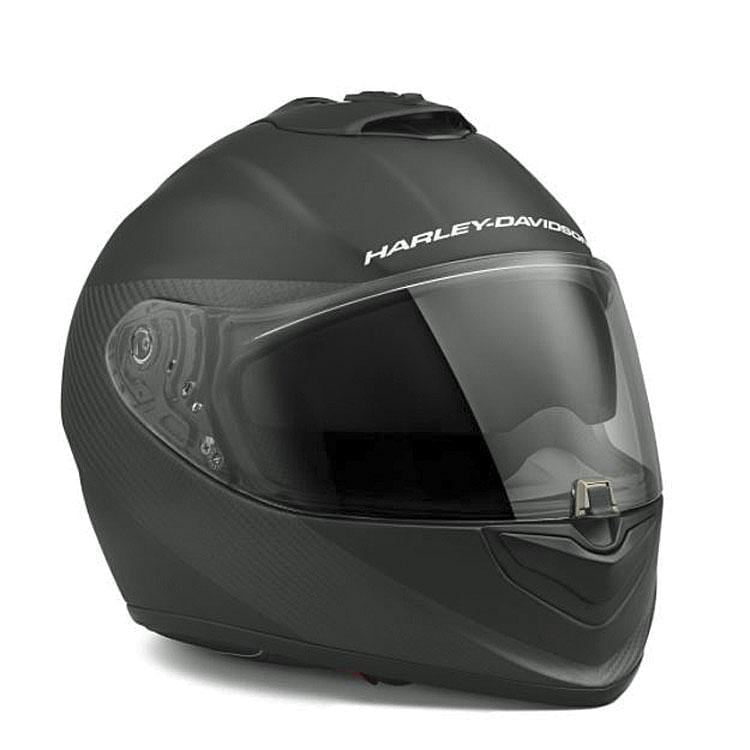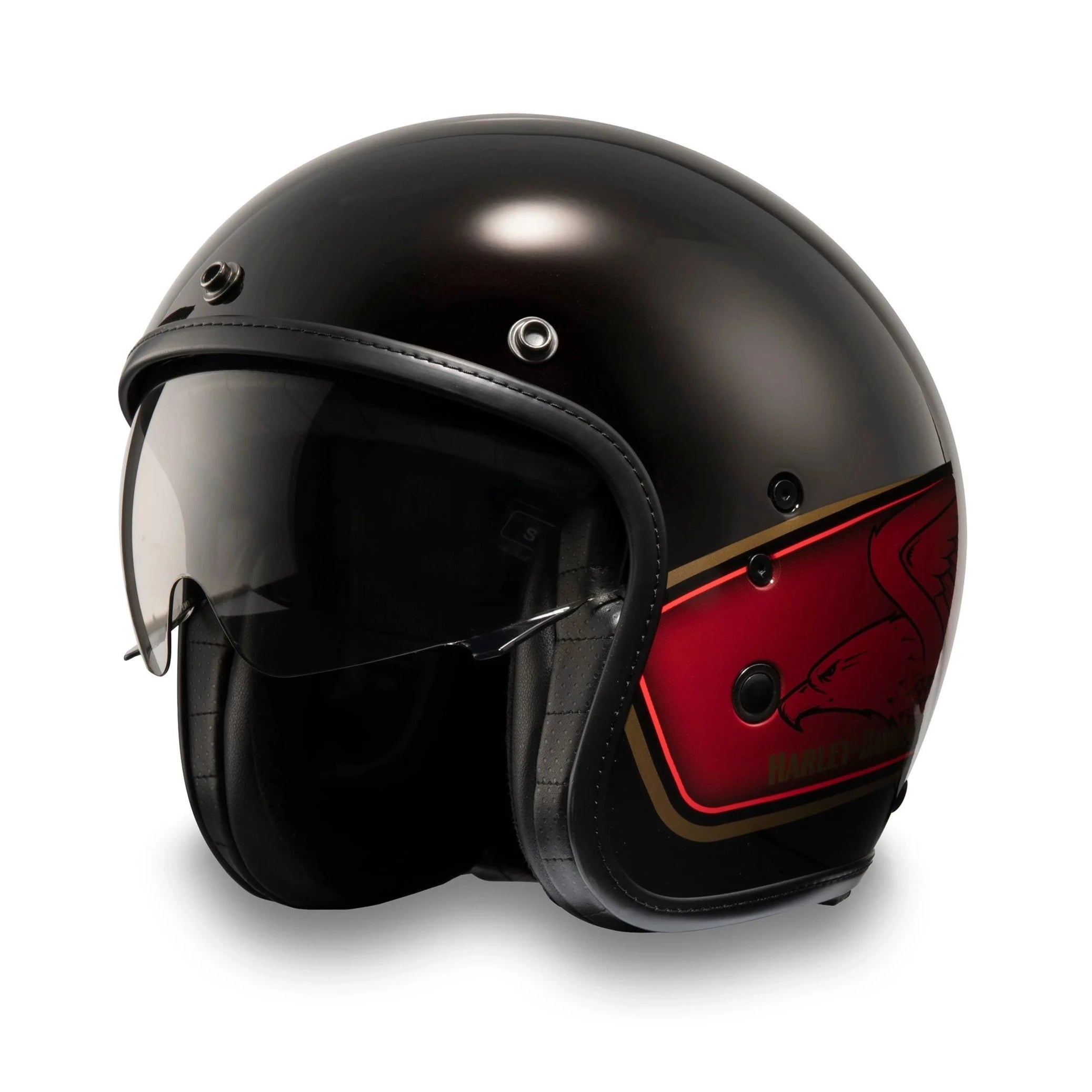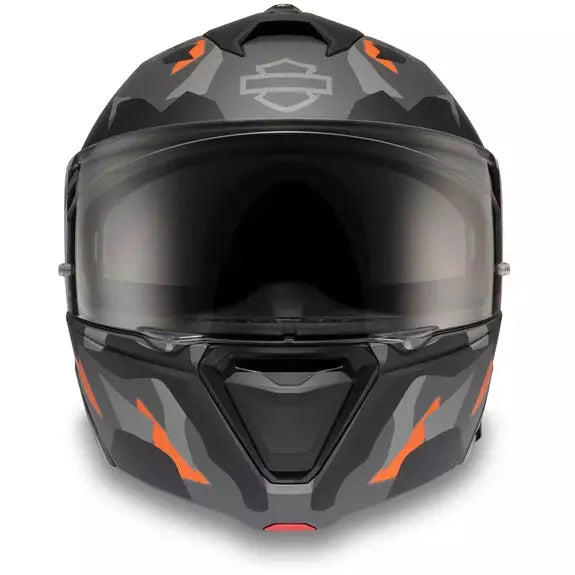Do Motorcycle Helmets Work?
Importance of Wearing a Helmet When Riding
- Motorcycle helmets play a crucial role in reducing injuries and fatalities in accidents.
- Statistics show a strong correlation between helmet use and reduced injury rates.
- Helmets absorb impact, prevent skull fractures, and minimize facial and neck injuries.
- Proper helmet fit and use are essential for maximum protection.
- Helmet laws vary across countries, with some having mandatory helmet laws.
- Common misconceptions about helmets, such as discomfort and inconvenience, are unfounded.
- Both riders and passengers should wear helmets for optimal protection.
- Increased helmet use, awareness, and effective enforcement of helmet laws are vital for motorcycle safety.
Do Motorcycle Helmets Work? The Importance of Wearing a Helmet When Riding
I. Introduction
A. Importance of Motorcycle Safety:
Motorcycle Helmets: A Lifesaving Protection
Motorcycling can be an exhilarating experience, but it also comes with inherent risks. According to the National Highway Traffic Safety Administration, motorcyclists are 29 times more likely to die in a traffic accident than car occupants. Therefore, taking steps to enhance motorcycle safety is of paramount importance.
B. Role of Motorcycle Helmets in Reducing Injuries and Fatalities:
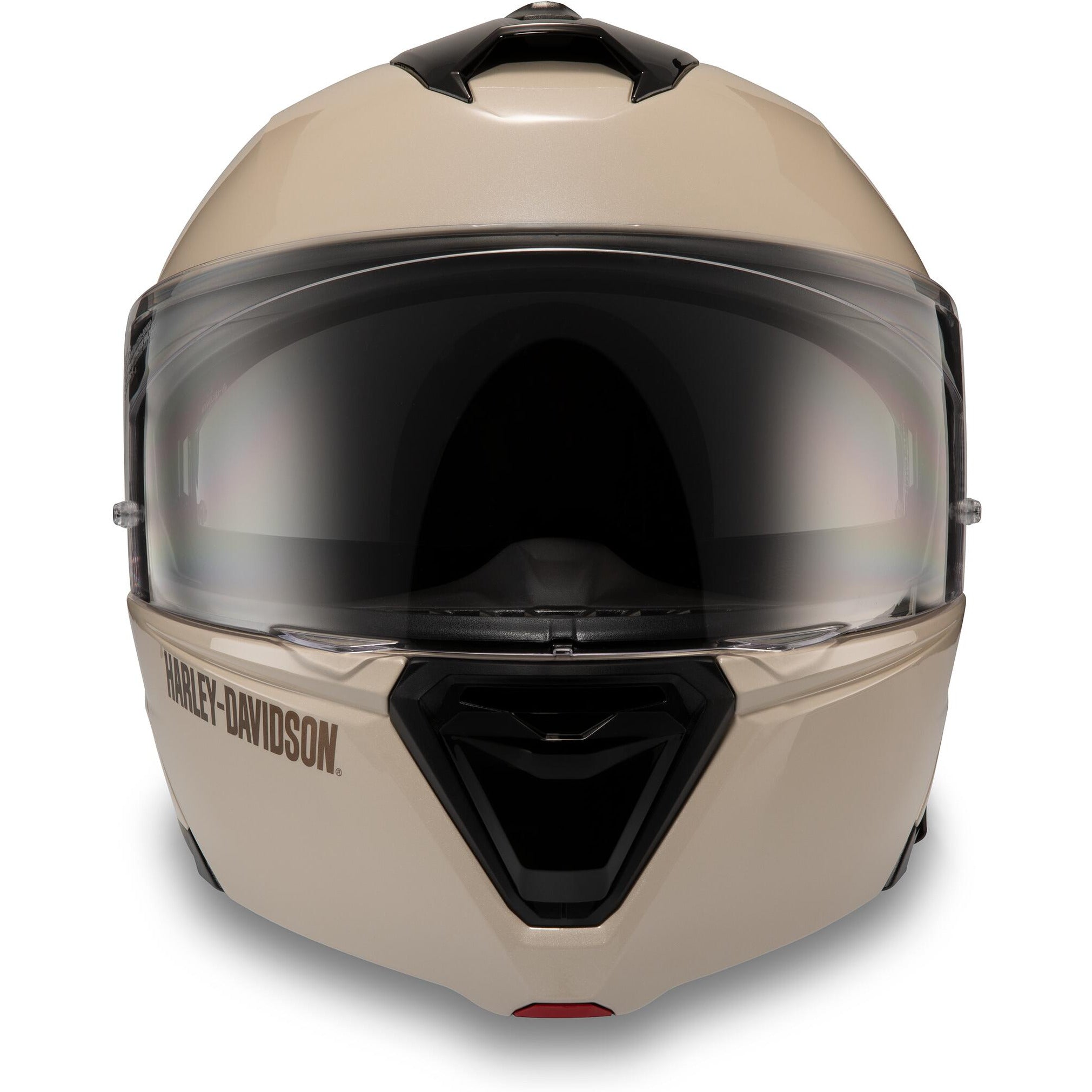
Title: HARLEY-DAVIDSON® CAPSTONE SUN SHIELD II H31 MODULAR HELMET-WHITE
Price: £247.33
SHOP NOW
Motorcycle Helmets: The Ultimate Protection
Motorcycle helmets play a crucial role in reducing the severity of injuries and fatalities in motorcycle accidents. Research has consistently shown that wearing a helmet can significantly lower the risk of head injuries, brain damage, and death in the event of a crash.
C. Thesis Statement:
The Helmet's Role in Motorcycle Safety
Title: HARLEY-DAVIDSON® HYDE WAY 120TH ANNIVERSARY X13 FULL FACE HELMET
Price: £224.85
SHOP NOWThis article comprehensively explores the effectiveness of motorcycle helmets in reducing the risk of severe head injuries and fatalities in motorcycle accidents. By examining statistics, evidence, helmet types, proper usage, and addressing objections, we aim to underscore the importance of wearing a helmet and encourage increased helmet use among motorcyclists.
II. Statistics and Evidence
A. Statistics on Motorcycle Accidents and Injuries:
The Staggering Numbers
Title: HARLEY-DAVIDSON® BRAWLER SUN SHIELD X09 MATTE BLACK FULL FACE HELMET
Price: £449.70
SHOP NOWAccording to the World Health Organization, approximately 1.35 million people die each year from road traffic crashes, with motorcyclists accounting for a significant proportion of these fatalities. In the United States, the NHTSA reports that in 2020, motorcyclists comprised 14% of all traffic fatalities, despite making up only 3% of registered vehicles.
B. Comparative Data on Helmet Use and Injury Rates:
Helmets: The Difference-Maker
Numerous studies have demonstrated a strong correlation between helmet use and reduced injury rates. For instance, a study published in the journal "Accident Analysis & Prevention" found that helmet use was associated with a 42% reduction in the risk of motorcycle-related fatalities.
Title: HARLEY-DAVIDSON® 120TH ANNIVERSARY EAGLE H-D® X14 SUN SHIELD 3/4 HELMET
Price: £229.99
SHOP NOW
C. Studies and Research Findings on the Effectiveness of Motorcycle Helmets:
Research Unanimously Agrees
A meta-analysis of 45 studies on motorcycle helmet effectiveness conducted by the Cochrane Collaboration concluded that helmets significantly reduce the risk of head, brain, and facial injuries, as well as overall mortality in motorcycle crashes.
III. Mechanisms of Motorcycle Helmet Protection
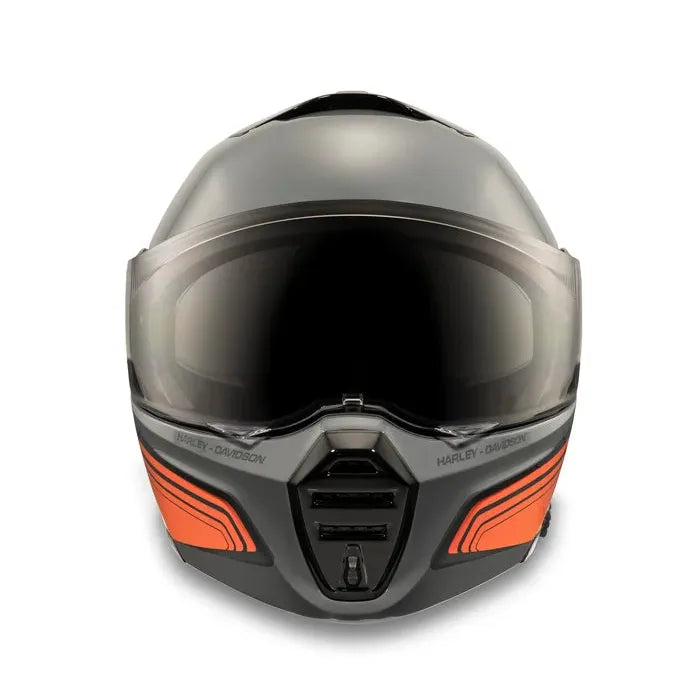
Title: HARLEY-DAVIDSON® EVO X17 SUNSHIELD MODULAR HELMET
Price: £269.82
SHOP NOW
A. Energy Absorption and Impact Distribution:
The Helmet's Protective Shield
Motorcycle helmets are designed to absorb and distribute the force of an impact, thereby reducing the amount of energy transferred to the rider's head. The helmet's outer shell deflects the impact, while the inner liner absorbs and dissipates the energy.
B. Prevention of Skull Fractures and Brain Injuries:
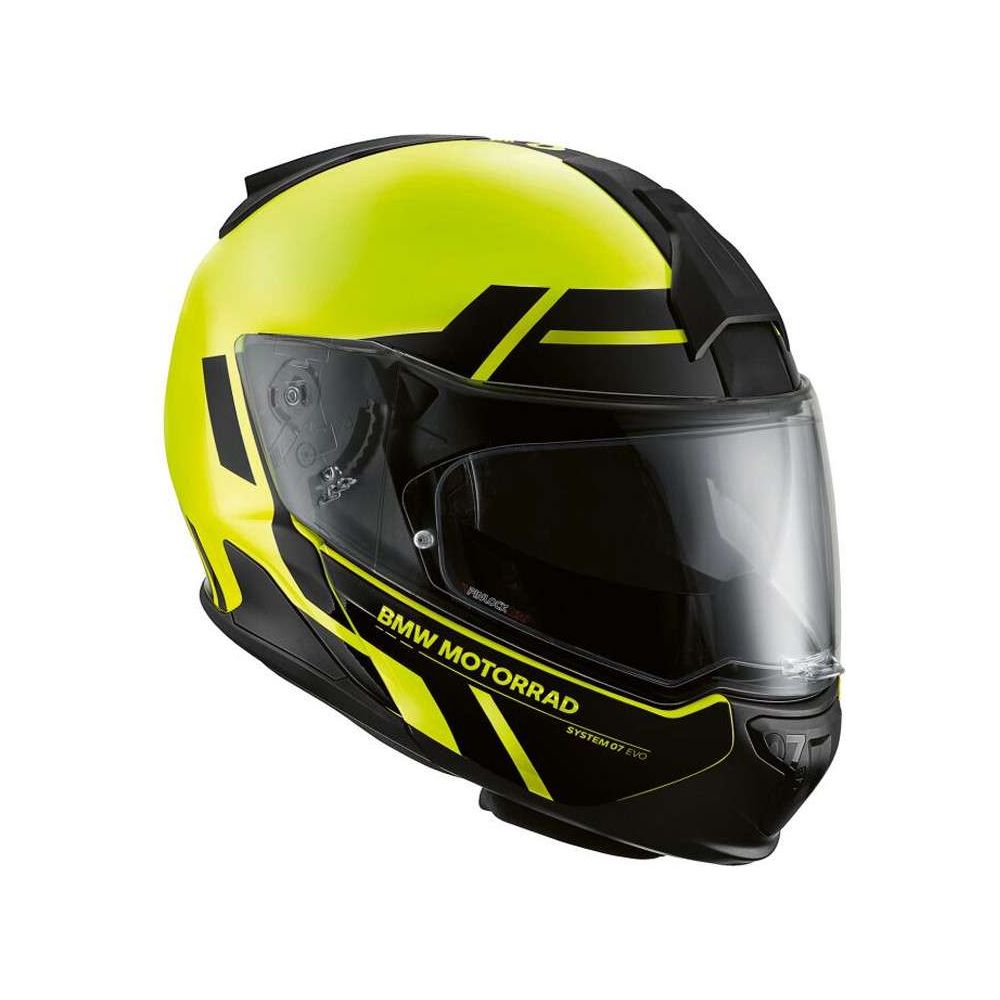
Title: BMW MOTORRAD SYSTEM 7 EVO HELMET - SPECTRUM FLUOR
Price: £595.00
SHOP NOW
Guarding the Brain
Helmets provide a protective barrier that helps prevent skull fractures and brain injuries in the event of a crash. The rigid outer shell and the shock-absorbing inner liner work together to protect the rider's head from blunt force trauma and penetrating objects.
C. Minimization of Facial and Neck Injuries:
Protecting the Vulnerable Areas
Title: HARLEY DAVIDSON® CAPSTONE CAMO SUN SHIELD II H31 MODULAR HELMET
Price: £247.33
SHOP NOWMotorcycle helmets also offer protection for the rider's face and neck. The helmet's chin bar helps prevent facial injuries, while the neck roll provides support and helps prevent whiplash injuries.
IV. Helmet Types and Standards
A. Different Types of Motorcycle Helmets:
Choosing the Right Helmet
There are several types of motorcycle helmets available, including full-face helmets, open-face helmets, and modular helmets. Full-face helmets offer the most comprehensive protection, covering the entire head, including the face. Open-face helmets expose the face but provide protection for the top and back of the head. Modular helmets combine features of both full-face and open-face helmets, allowing the chin bar to be flipped up or removed.
B. Safety Standards and Certifications:
Ensuring Helmet Quality
Motorcycle helmets must meet certain safety standards and certifications to ensure their effectiveness in protecting riders. Common safety standards include the Department of Transportation (DOT) standard in the United States, the European Economic Community (ECE) standard in Europe, and the Snell Memorial Foundation (Snell) standard in the United States. Helmets that meet these standards undergo rigorous testing to ensure they provide adequate protection.
C. Importance of Choosing a Helmet that Meets Safety Standards:
Safety First
It is essential to choose a motorcycle helmet that meets recognized safety standards. Standards like DOT, ECE, and Snell ensure that the helmet has been tested and complies with strict performance requirements, offering riders the best possible protection.
V. Proper Helmet Fit and Use
A. How to Choose the Right Helmet Size and Fit:
Finding the Perfect Fit
Proper helmet fit is crucial for maximizing protection. To ensure a snug and secure fit, measure your head circumference and refer to the manufacturer's sizing chart. The helmet should fit snugly without causing discomfort or excessive movement.
B. Proper Positioning and Fastening of Helmet Straps:
Securing the Helmet Properly
After selecting the correct helmet size, position it properly on your head, ensuring it sits level and covers your forehead. Fasten the helmet straps securely, making sure they form a "V" shape under your chin. Tighten the straps until the helmet feels secure but not too tight.
C. Consequences of Improper Helmet Use:
The Risks of Incorrect Helmet Use
Wearing a helmet improperly can reduce its effectiveness in protecting the rider. A helmet that is too loose can come off during a crash, while a helmet that is positioned incorrectly may not provide adequate protection for the head and face.
VI. Helmet Laws and Enforcement
A. Overview of Helmet Laws in Different Countries and Regions:
Legal Requirements for Helmet Use
Helmet laws vary across countries and regions. Some countries, such as Australia, Canada, and many states in the United States, have mandatory helmet laws that require all motorcyclists to wear a helmet while riding. Other countries have partial helmet laws that apply to certain riders or situations.
B. Challenges in Helmet Law Enforcement and Compliance:
Obstacles to Helmet Law Effectiveness
While helmet laws are in place in many jurisdictions, enforcement can be challenging. Factors such as lack of resources, difficulty in identifying unhelmeted riders, and resistance from some riders contribute to the challenges of enforcing helmet laws.
C. Arguments for and Against Mandatory Helmet Laws:
The Debate over Helmet Laws
Proponents of mandatory helmet laws argue that they save lives and reduce the severity of injuries. They point to statistics showing that helmet use is associated with lower rates of head injuries and fatalities. Opponents of mandatory helmet laws argue that they infringe on personal freedom and that riders should have the right to choose whether or not to wear a helmet. They also raise concerns about the potential negative effects of helmet use, such as reduced peripheral vision and increased heat buildup.
VII. Overcoming Objections and Misperceptions
A. Addressing Common Misconceptions about Motorcycle Helmets:
Dispelling Myths and Misinformation
Some common misconceptions about motorcycle helmets include the belief that they are uncomfortable, restrict vision or hearing, or cause accidents. Research has shown that these misconceptions are unfounded. Modern motorcycle helmets are designed to be comfortable, provide good visibility, and do not increase the risk of accidents.
B. Dispelling Myths about Helmet Discomfort and Inconvenience:
Comfort and Convenience of Modern Helmets
Many people believe that motorcycle helmets are uncomfortable and inconvenient. However, advancements in helmet design have resulted in helmets that are lightweight, well-ventilated, and provide a comfortable fit.
C. Emphasizing the Importance of Helmet Use for Both Riders and Passengers:
Protecting All Occupants
It is crucial for both motorcycle riders and passengers to wear helmets. A helmet can protect the passenger from head and facial injuries in the event of a crash, just as it protects the rider.
VIII. Conclusion
A. Reiteration of Thesis Statement:
The Overwhelming Evidence in Favor of Helmet Use
This article has explored the effectiveness of motorcycle helmets in reducing the risk of severe head injuries and fatalities in motorcycle accidents. The evidence presented clearly demonstrates that wearing a helmet significantly lowers the likelihood of serious injury or death in the event of a crash.
B. Call for Increased Helmet Use and Awareness:
A Collective Effort to Save Lives
Given the overwhelming evidence of their effectiveness, it is imperative to increase helmet use among motorcyclists worldwide. Governments, motorcycle safety organizations, and riders themselves must work together to promote helmet use and raise awareness of the life-saving benefits of helmets.
C. Encouragement of Helmet Laws and Enforcement:
The Role of Legislation and Enforcement
Mandatory helmet laws play a vital role in increasing helmet use and reducing motorcycle-related injuries and fatalities. Governments should implement and enforce helmet laws effectively, while riders should comply with these laws and set an example for others.
IX. References
- National Highway Traffic Safety Administration: Motorcycle Helmet Use
- World Health Organization: Motorcycle Helmets
- Cochrane Collaboration: Motorcycle Helmets for Preventing Injury
- Department of Transportation: Motorcycle Helmet Safety
- European Economic Community: Motorcycle Helmets
- Snell Memorial Foundation: Motorcycle Helmets
- Australian Government: Motorcycle Helmet Law Factsheet
- Transport Canada: Canadian Motor Vehicle Safety Standard 218 - Motorcycle Helmets
- Insurance Institute for Highway Safety: Helmet Use Laws
Motorcycle Helmet FAQs
Can I ride a motorcycle without a helmet?
In some jurisdictions, it is legal to ride a motorcycle without a helmet. However, it is important to note that wearing a helmet significantly reduces the risk of head injury and death in the event of a crash.
Are all motorcycle helmets created equal?
No, motorcycle helmets vary in terms of design, features, and safety ratings. It is important to choose a helmet that meets recognized safety standards and fits you properly.
How should a motorcycle helmet fit?
A motorcycle helmet should fit snugly and securely on your head without causing discomfort or excessive movement. It should not move around when you shake your head.
What are the different types of motorcycle helmets?
There are three main types of motorcycle helmets: full-face helmets, open-face helmets, and modular helmets. Full-face helmets offer the most comprehensive protection, while open-face helmets expose the face and modular helmets combine features of both.
How can I tell if my helmet meets safety standards?
Look for a sticker or label on the helmet that indicates it meets a recognized safety standard, such as DOT, ECE, or Snell.
What are some common misconceptions about motorcycle helmets?
Some common misconceptions include the belief that helmets are uncomfortable, restrict vision or hearing, or cause accidents. Research has shown that these misconceptions are unfounded.
Why should I wear a helmet even if it's not required by law?
Wearing a helmet is the single most effective way to protect yourself from head injury and death in the event of a motorcycle crash. It is worth wearing a helmet even if it's not required by law.
Is it important for motorcycle passengers to wear helmets?
Yes, it is just as important for motorcycle passengers to wear helmets as it is for riders. A helmet can protect the passenger from head and facial injuries in the event of a crash.
How do I properly care for my motorcycle helmet?
To maintain the effectiveness and safety of your motorcycle helmet, it's important to properly clean and store it. Follow the manufacturer's instructions for cleaning and avoid exposing the helmet to extreme heat or cold.
Explore More:
- Rev Up Your Style: Shop the Latest Motorbike Pants Collection
- Unleash the Italian Stallion: Discover the Ducati Apparel Collection
- Ride with the Legends: Explore the Suzuki Apparel Range
- Gear Up for Every Ride: Motorcycle Apparel to Suit Your Needs
- Kawasaki Spirit: Unleash Your Racing Passion with Our Collection
- Royal Enfield: Timeless Appeal, Modern Style - Gear Up with Us
- Triumphant Style: Elevate Your Ride with Our Exclusive Collection
